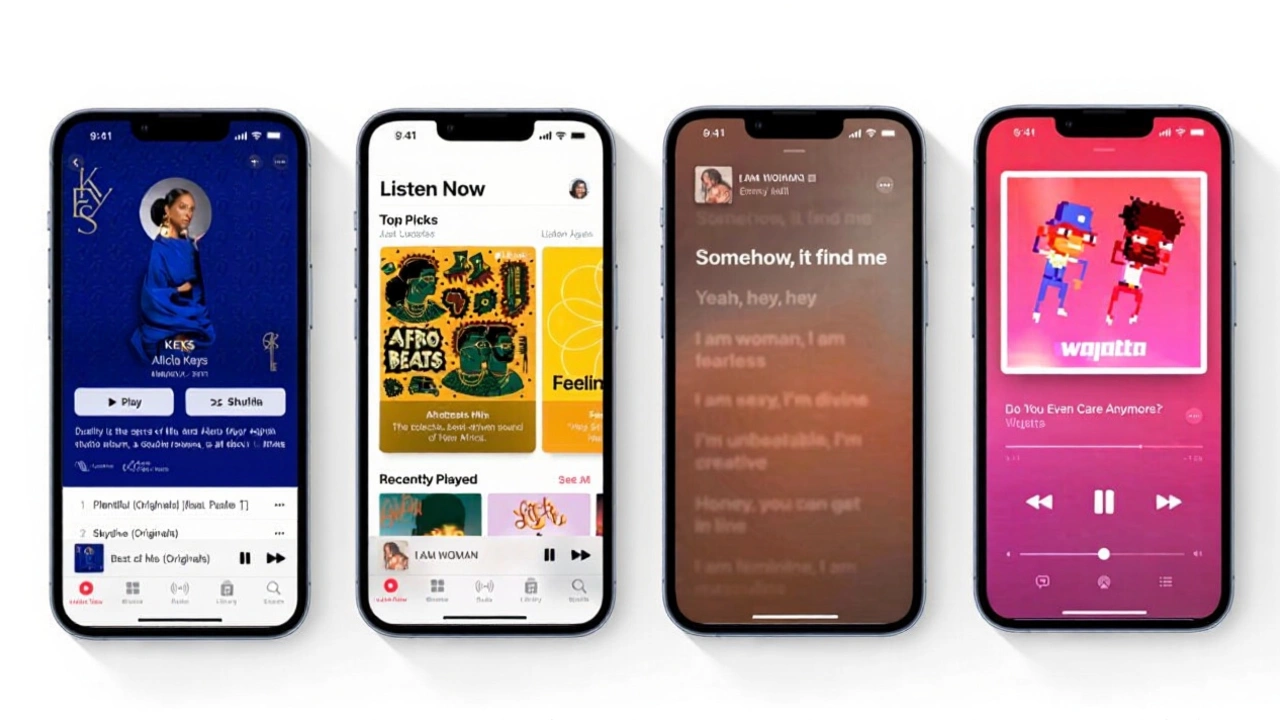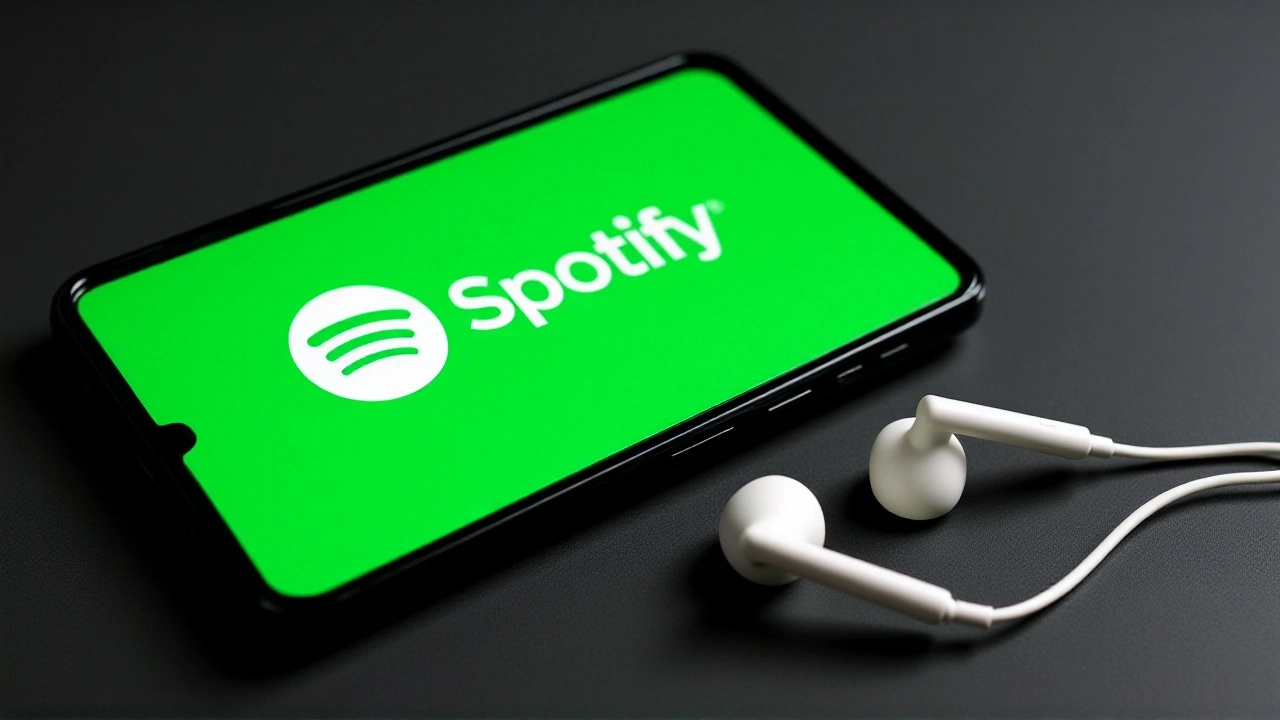When Mitch Glazier, CEO of Recording Industry Association of America announced that paid music streaming subscriptions passed the 100‑million mark, many wondered if the next logical step was a price hike. The milestone came in the United States, a market of roughly 340 million people, where the RIAA reported 105.3 million accounts in the first half of 2025. Yet, despite the swelling subscriber base, total recorded‑music revenue barely budged, climbing less than 1 % year‑over‑year.
- Paid streaming subscriptions: 105.3 million (H1 2025)
- Total music revenue: $5.6 billion (up < 1 % YoY)
- Streaming revenue: $4.68 billion (up 2.3 % YoY)
- Physical sales decline: 5.9 % to $576.4 million
- Vinyl units sold: 22.1 million (down 1 % YoY)
Why the Growth Slow‑down Matters
The RIAA’s data, released on October 25 2025, shows a market at a crossroads. Subscriptions have risen steadily since the 2024 milestone, but the marginal revenue growth suggests a saturation point. "The number of paid subscriptions hit a historic milestone," Glazier said, "yet revenue growth remains tepid, underscoring the need for new value propositions." The paradox of more users but flat earnings puts pressure on record labels and streaming platforms to rethink pricing or introduce tiered experiences.
Breakdown of Streaming Revenue Streams
Streaming isn’t a monolith. Free, ad‑supported tiers generated $875.1 million, a 2.9 % dip, reflecting advertisers pulling back in a tighter economy. Non‑premium paid plans—those with limited catalogs or device caps—shrunk 0.4 % to $262.7 million. The “other streaming” bucket, which includes statutory‑license royalties paid through SoundExchange, fell 5.3 % to $652.9 million.
Conversely, full‑premium subscriptions, the heavyweight of the sector, delivered $3.2 billion, a 5.7 % rise. That boost kept total streaming revenue on an upward trajectory, albeit modest. The data paints a picture of a ladder: the top rung climbs, but the middle rungs slip.

Physical Formats Falter After Years of Resilience
Physical sales have long been the industry’s safety net. In H1 2025, they slipped 5.9 % to $576.4 million. Vinyl, once the poster child for a renaissance, sold 22.1 million units—down 1 % both in units and dollar value ($456.9 million). CDs, the workhorse of the early‑2000s, tumbled 22 % to $108.1 million, mirroring a decline in unit sales to 11.7 million.
The downturn signals that even niche collectors aren’t enough to offset the digital drag. Analysts at MIDiA Research warned that “the physical revival may be a blip rather than a trend,” especially as younger listeners gravitate toward streaming.
Global Context and Industry Sentiment
Globally, the picture looks a bit brighter. The International Federation of the Phonographic Industry (IFPI) reported in its 2025 Global Music Report that streaming accounted for $20.4 billion—69 % of worldwide recorded‑music revenue in 2024. Subscription streaming grew 9.5 %, while ad‑supported formats rose a modest 1.2 %.
Yet, frustration bubbles beneath the numbers. The MIDiA Research Independent Label and Distributor Survey 2024 found over half of label respondents believe streaming isn’t a place to build fandom, and three‑quarters think a new model is overdue. This sentiment echoes the Exploding Topics 2025 report that streaming now represents 84 % of global music revenue, but growth is slowing to double‑digit percentages.
Forecasts from Statista predict streaming revenue could hit $30 billion by 2027, up from $17.5 billion today. But those numbers assume pricing remains static—a gamble if subscriber fatigue grows.

Potential Paths Forward
Industry insiders suggest three routes. First, modest price hikes on premium tiers could recoup the revenue gap, though it risks alienating price‑sensitive users. Second, introducing “artist‑first” bundles—pairing streaming with exclusive merch or concert tickets—might deepen fan engagement, a solution some indie labels are already piloting. Third, diversifying revenue through synchronization licensing, which the IFPI notes reached $650 million in 2024, could offset streaming’s sluggishness.
What’s clear is that the era of limitless, low‑cost streaming is ending. As Glazier warned, “the market’s endurance will depend on how we evolve the value proposition for both listeners and creators.”
Frequently Asked Questions
Why did music streaming revenue only grow 2.3% despite more subscriptions?
Revenue growth was muted because ad‑supported tiers fell 2.9% and non‑premium plans slipped 0.4%. Premium subscriptions grew, but they alone couldn’t offset the declines in lower‑priced segments, leading to a modest overall increase.
What impact will a potential price increase have on subscribers?
A modest hike could boost revenue per user, but studies show price sensitivity is high among younger listeners. Platforms risk churn if they raise prices without adding perceived value, such as exclusive content or higher‑quality audio.
How are physical sales trending compared to digital formats?
Physical revenue fell 5.9% in H1 2025, with vinyl down 1% and CDs plunging 22%. While niche collectors keep vinyl alive, the overall trend favors digital, especially streaming, which now dominates global revenue.
What do industry surveys say about the future of streaming?
MIDiA Research’s 2024 label survey found over 50% of respondents doubt streaming builds fandom, and 75% call for an alternative model. This signals growing frustration and a push for hybrid approaches that blend streaming with direct‑to‑fan experiences.
What are the global forecasts for music streaming revenue?
Statista projects streaming revenue to climb to $30 billion by 2027, up from $17.5 billion today. This assumes continued subscriber growth and modest price adjustments, though the pace may slow if the U.S. market plateaus.
